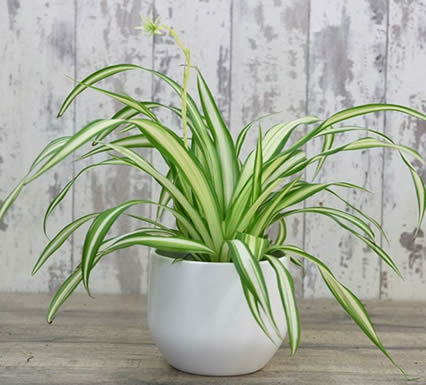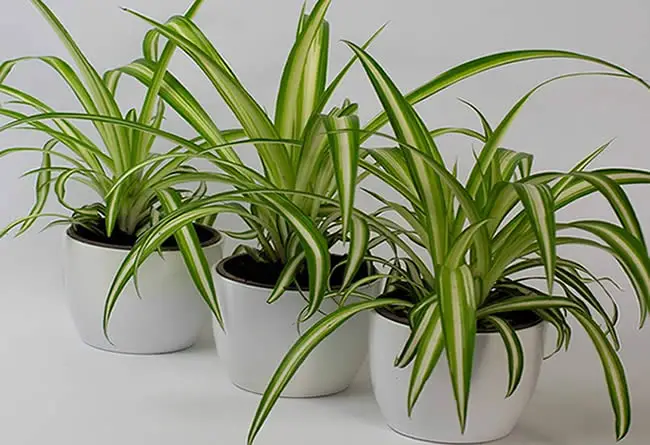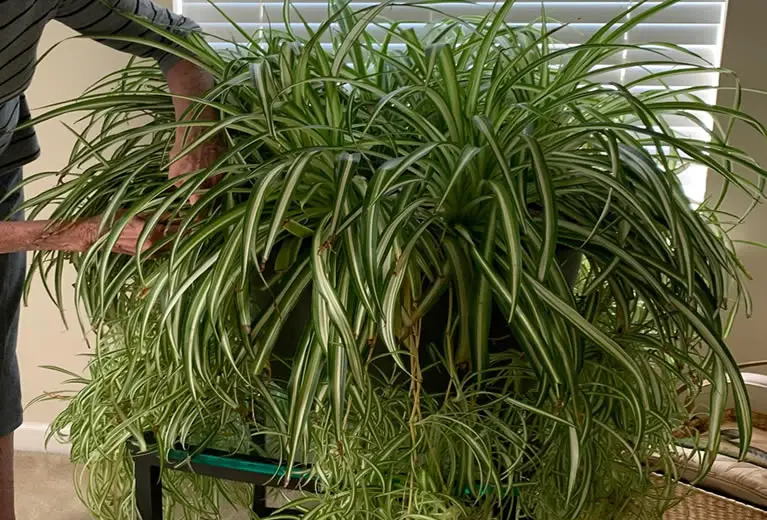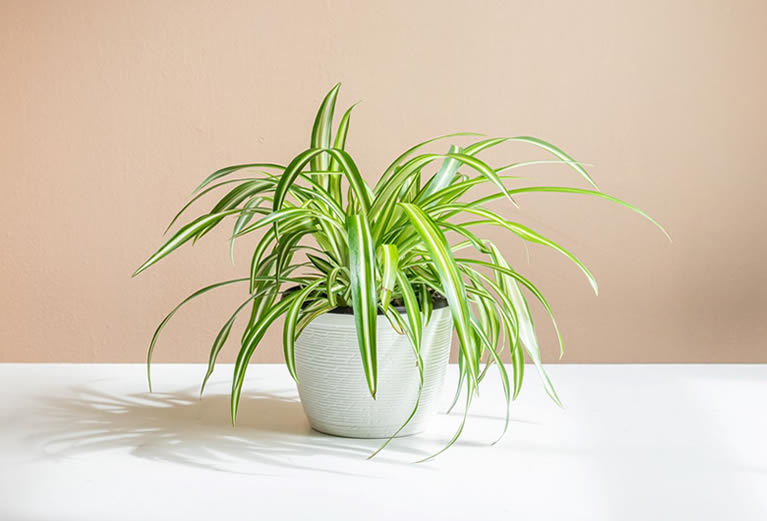With its arching green-and-white striped leaves and adorable baby offshoots, the Spider Plant (Chlorophytum comosum) is a staple in indoor gardening—and for good reason. It’s fast-growing, easygoing, and brings a fresh, retro vibe to any room. Whether you’re popping it in a hanging basket or letting it trail from a high shelf, this cheerful houseplant is full of charm and resilience.
Here’s everything you need to know to grow and care for a thriving Spider Plant, plus how to handle a few common hiccups along the way.
Table of Contents
- Finding the Right Light for Vibrant, Variegated Leaves
- How to Water and Choose the Best Soil for Spider Plants
- Temperature and Humidity Tips to Keep Your Plant Thriving
- Fertilizer Schedule for Healthy, Lush Growth
- When and How to Repot Your Spider Plant
- How to Propagate Spiderettes for Easy New Plants
- Best Rooms in Your Home to Display a Spider Plant
- Solving Common Spider Plant Problems: A Quick Troubleshooting Guide
- Final Thoughts
Finding the Right Light for Vibrant, Variegated Leaves
Spider Plants thrive in bright, indirect light, which helps keep their striped foliage vibrant and full.
While they tolerate medium light and even lower light conditions, their growth may slow and their variegation can fade in dim spaces.
Avoid strong direct sun, which can cause leaf tips to brown or scorch.
How to Water and Choose the Best Soil for Spider Plants
Use a standard, well-draining potting mix—Spider Plants aren’t fussy, but they hate sitting in soggy soil.

Water when the top inch of soil feels dry, then allow any excess to drain away completely.
These plants prefer a steady rhythm: not too dry, not too wet.
They’re also sensitive to fluoride and salts in tap water, which can cause leaf tip browning, so distilled or filtered water is ideal if your tap water is heavily treated.
Temperature and Humidity Tips to Keep Your Plant Thriving
Spider Plants prefer indoor temperatures between 60°F and 80°F.
They handle average humidity well, but dry air (especially during winter) can lead to crispy tips.
If your plant’s edges are browning and you’re confident it’s not overwatering, try increasing humidity slightly with misting or a pebble tray.
Fertilizer Schedule for Healthy, Lush Growth
Feed every 4 to 6 weeks during the growing season (spring through early autumn) with a balanced, water-soluble houseplant fertilizer at half strength.
Use a good quality 10-10-10 fertilizer, such as this one, or a 20-20-20 fertilizer, like this one.
Skip feeding during winter when the plant slows down naturally.
When and How to Repot Your Spider Plant
Spider Plants are quick growers and can become root-bound in their pots, especially if you notice roots poking out of the drainage holes or the plant seems thirsty all the time.

Repot every 1–2 years into a container one size larger, using fresh potting mix.
How to Propagate Spiderettes for Easy New Plants
One of the Spider Plant’s most lovable traits is its eagerness to produce baby plants—or “spiderettes.”
These small offshoots can be left trailing or propagated to grow new plants.
Simply snip them off once they have small roots and pot them in moist soil, or root them in water first before transferring them to a pot.
Best Rooms in Your Home to Display a Spider Plant
Spider Plants are wonderfully versatile and do well in living rooms, bathrooms, kitchens, or bedrooms.
They look especially beautiful in hanging baskets or perched on shelves where their long, graceful foliage and baby plants can cascade freely.
Solving Common Spider Plant Problems: A Quick Troubleshooting Guide
Even the easiest plants can hit a bump in the road.
Here are a few common Spider Plant issues and how to get your plant back on track.
Brown leaf tips
This is the most common complaint with Spider Plants.
It’s usually caused by dry air, inconsistent watering, or fluoride/salt buildup in tap water.
Fix it: Switch to distilled or filtered water and water thoroughly but only when the soil feels dry.
Trim brown tips with clean scissors and consider misting or boosting humidity if the air is very dry.
Pale or fading leaves
Leaves that lose their bright variegation or turn dull may be getting too little light.
Fix it: Move the plant to a spot with brighter, indirect light.
Avoid direct sun, but don’t let it sit in deep shade either.
Wilting or soft leaves
If the plant looks droopy or mushy, it’s likely being overwatered—or possibly suffering from root rot.
Fix it: Check the soil. If it’s soggy, let it dry out completely and adjust your watering schedule.
Repot with fresh, dry soil if needed and trim away any mushy roots.
Spiderettes not forming
A mature plant that isn’t producing offshoots may be under stress or lacking light.

Fix it: Make sure the plant is getting enough indirect sunlight and isn’t rootbound.
A gentle dose of fertilizer during the growing season can help spark baby plant production.
Leaves curling or twisting
This could be a sign of underwatering, low humidity, or sudden environmental stress.
Fix it: Check the soil moisture and be consistent with your watering routine.
If humidity is low, add a bit of moisture to the air around the plant.
Final Thoughts
Spider Plants are the kind of plant that makes you look like a natural gardener, even if you’re just getting started.
With a little light, a good watering rhythm, and the occasional snip of a spiderette, this plant will reward you with full, trailing greenery and a fresh pop of life in any space.
Keep it happy, and it won’t just grow—it’ll multiply.

